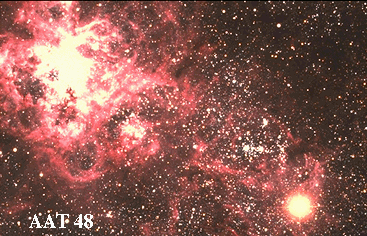Astronomy Picture of the Day
Discover the cosmos! Each day a different image or photograph of our fascinating universe is featured, along with a brief explanation written by a professional astronomer.
October 27, 1995

The Tarantula and the Supernova
Credit:
Anglo-Australian
Telescope photograph by David Malin
Copyright:
Anglo-Australian Telescope
Board